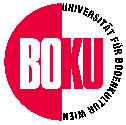|

German Version
Site map
FAIR 3889
Virus diseases
Phytoplasma diseases
Pathogen collection
Pathogen detection
ACLSV
ApMV
ASGV
ASPV
PPV
PDV
PNRSV
ArMV
ToRSV
RpRSV
SLRSV
GFLV
GLRaV-1
GLRaV-3
LChV
CMLV
CRMV
CNRMV
CGRMV
ChTLV
CVA
AP
ESFY
PD
Pathogen elimination
Contact us
Related Sites
|
Detection Methods for ASPV
Molecular Methods
RT-PCR assay developed by W. Jelkmann

RT reaction
- Mix the following components in a 1.5 ml microcentrifuge tube:
- 5 µl purified nucleic acid extract
- 1 µl primer mix 100 pmol/µl hexamer and 0.5 µg/µl
oligo-dT17- primer
- 6 µl RNase-free water
- Incubate at 70° C for 5 min. to denature the RNA
- Place on ice and add the following components:
- 4 µl 5 x MMLV RT buffer
- 2 µl 100 mM DTT
- 1 µl 10 mM dNTP mix
- 1 µl MMLV-RT (200 units)
- Incubate at room temperature for 5 minutes
- Incubate at 37° C for 60 minutes
- Incubate at 70° C for 15 minutes
- Store on ice or at -20° C until required for use in PCR
PCR reaction
- 5 µl 10 x buffer
(100 mM Tris-HCl pH 9.2, 750 mM KCl, 35 mM MgCl2)
- 1 µl 10 mM dNTPs
- 1 µl 10 µM primer mix
- 1 µl cDNA
- 1 µl Taq polymerase (approx. 5 units)
- 41 µl sterile water
Primers:
- ASPV9019: 5´-CTC TTG AAC CAG CTG ATG GC-3´
- ASPV9263: 5´-ATA GCC GCC CCG GTT AGG TT-3´
Temperature profile:
94º - 2 min / (94º - 1 min. / 57º - 1 min. / 72º - 1 min.) x 35 /
72º - 5 min.
AmpliDet RNA assay developed by
M. Klerks, Plant Research International BV.

Nucleic acid extraction
100 mg of leaf tissue is ground in liquid nitrogen and dissolved
in RLT-lysisbuffer from the RNeasy plant extraction kit (Westburg,
Quiagen). Extraction was carried out according to the RNeasy
extraction protocol.
Primers / Probes
ASPV reverse: 5'-AAT TCT AAT ACG ACT CAC TAT AGG GAG GAC TTT GAG TTT GCA GCA TGA-3'
ASPV forward: 5'-GCA GAT GTT GGA GCC TCA GA-3'
The reverse NASBA primer consistes of a 5'-T7 RNA polymerase
recognition site seqeunce and a 3' target-complementary sequence.
ASPV probe: Biotin labeled detection probe for specific detection
of amplicons by Northern blotting. 5'-ACG CAA AGC ATG TCT GGA AC-3'
ASPV MB: Molecular beacon enabling fluorescent real-time detection
of NASBA amplification. On the 5' end a fluorophore, on the 3' end a
quencher (DABCYL) is present. 5'-GCT CCA ACG CAA AGC ATG TCT GGA ACT GGA GC-3'
NASBA assay
The NASBA reaction mix consists of 5 µl NASBA-reagents
(160 mM Tris.HCl, pH 8.5, 48 mM MgCl2, 2 mM DTT,
4 mM dNTP, 8 mM ATP, UTP and CTP, 6 mM GTP and 2 mM ITP), 0.7
µl 350 mM KCl, 4 µl 5x primer mix (75 % DMSO and 1 µM
of each primer) and 2.3 µl of RNase free water per reaction.
A volume of 3 µl of sample solution (extracted RNA) is added
to the NASBA reaction mix. The reactions are pre-incubated at
65° C directly followed by 41° C for 5 min. each. The
NASBA reaction starts by adding 5 µl of enzyme mix (375 mM
sorbitol, 2.1 µg BSA, 0.08 U RNase H, 32 U T7 RNA polymerase
and 6.4 U AMV reverse transcriptase) per reaction, incubating
for 5 min. at 41° C, then shortly centrifuging followed by
incubation for 90 min. at 41° C.
Real-time amplification and detection using AmpliDet RNA is
carried out as described above, except that the 2.3 µl
RNase free water is replaced by 1 µl of 10 µM ROX
[5-(and -6)-carboxy-X-rhodamine], 1 µl of molecular beacon
solution (9 ng/µl) and 0.3 µl of RNase free water. The
ROX and molecular beacons must be suspened in RNase free water.
The 90 min. incubation at 41° C is performed in a thermostatic
fluorimeter measuring the emission spectrum of the fluorescent dye
attached to the molecular beacon in real-time for each sample every
2 min.
Northern blotting
NASBA products are analyzed by electrophoresis using a 1 %
pronarose gel with 0.5 µg/ml EtBr. Gels are run at 100 V for
15 min. in buffer containing 40 mM Tris-acetate and 1 mM EDTA,
pH 8.0 (1x TAE). The gel is blotted onto a Z-probe nylon membrane
in 0.3 M NaCl and 30 mM Na-citrate (2x SSC) for 20 min. Nucleic
acids are cross-linked onto the Z-probe by UV-exposure for 2 min.
Hybridization of the biotinylated probe (3 µM) to the NASBA
products is performed at 50° for 30-60 min. in 5x SSC, 7% SDS,
20 mM Na-phosphate, pH 6.7, 10 x Denhart's reagent. The blots are
washed twice with 3x SSC, 1% SDS at 50° for 5 min. and once
with buffer containing 0.1% SDS with 20 mM Na2HPO4,
0.36 M NaCl and 2 mM EDTA (2x SSPE) at room temperature for 10 min.
Subsequent steps are carried out at room temperature. The blots
are incubated for 30 min. with 2 µl streptavidin peroxidase
conjugate in 5x SSPE with 5% SDS, followed by extensive washing,
then incubated in ECL detection reagents (Amersham Pharmacia Biotech,
Freiburg, Germany) and exposed to X-ray films.
NASBA (nucleic acid sequence based amplification) is a
registered trademark in one or more countries. The amplification
technology used in the NASBA system is covered by various
patents and pending patents which are owned by Organon
Teknika BV.
Molecular beacon is a registered trademark in one or more
countries. The technology is covered by various patents and
pending patents which are owned by The Public Health
Research Institute.
AmpliDet RNA is a registered trademark by Plant Research
International BV.
|



